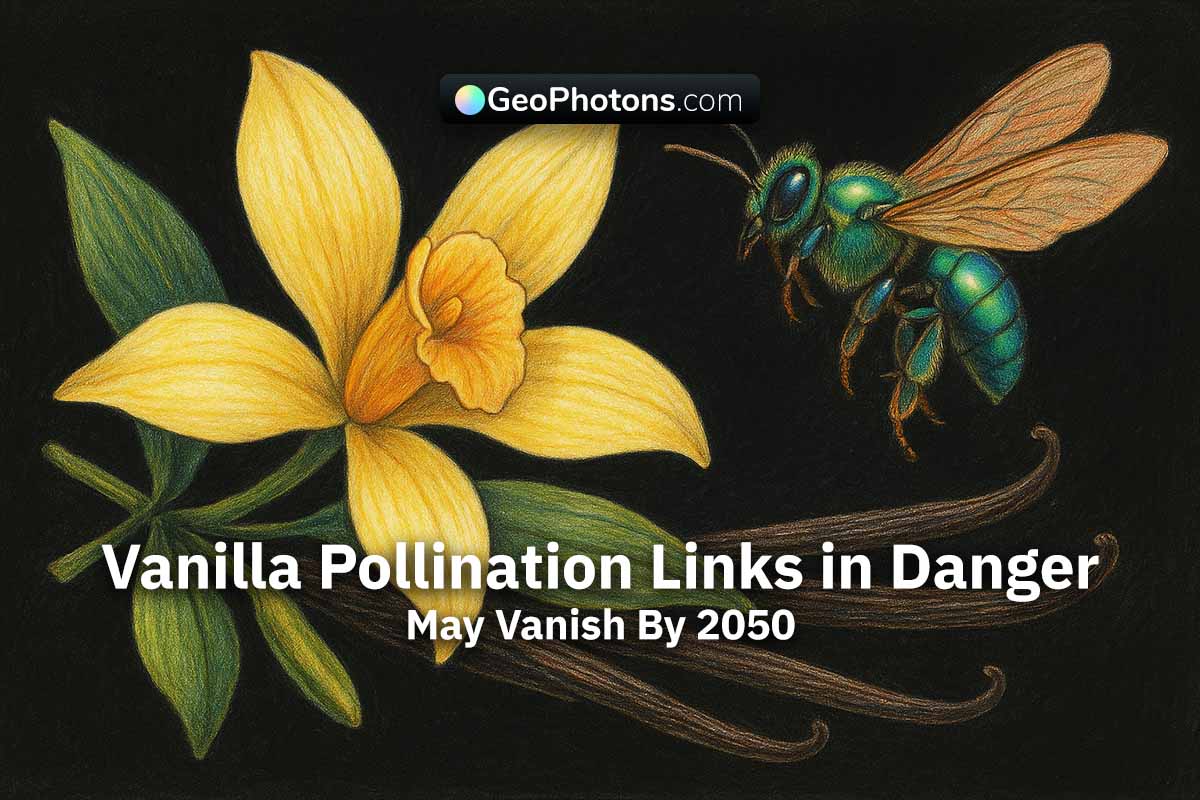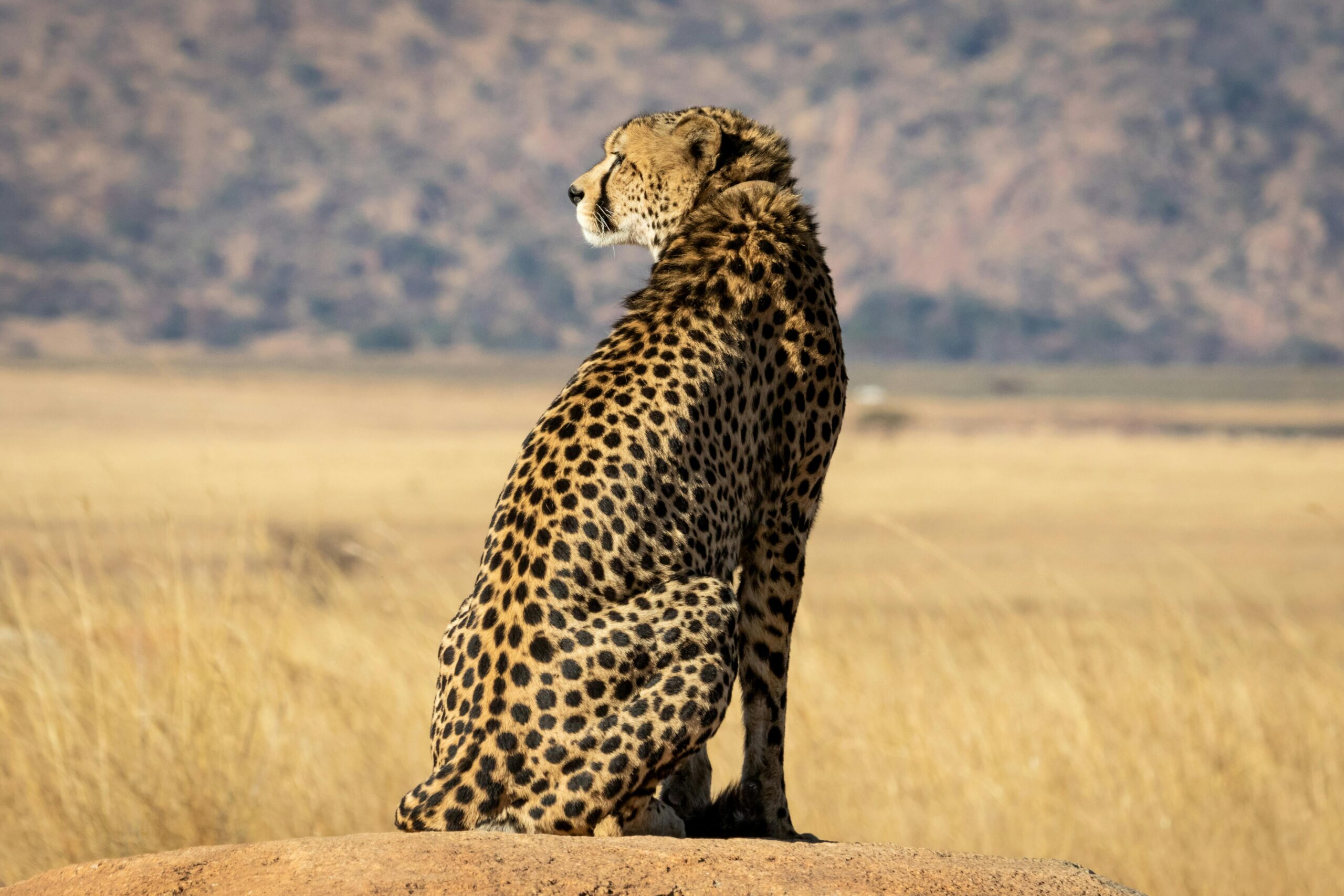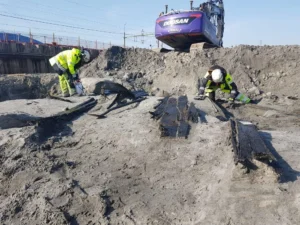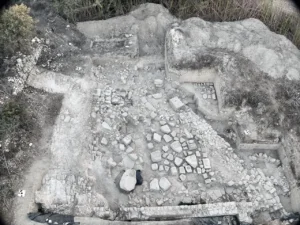Vanilla Pollination Links in Danger
Up to 90% of wild vanilla pollination links may vanish by 2050. Discover what’s at stake, why it matters for India, and how we can fight back for our vanilla.
What’s the story
Vanilla’s lifeline is vanishing due to climate change
Vanilla—the world’s favourite flavour—is in quiet danger. By 2050, up to 90% of the wild vanilla species’ pollination connections might collapse, according to a recent study in Nature Communications Biology. The culprits? Shifting temperatures, disappearing forests, and fewer orchid bees—the tiny pollinators essential for wild vanilla reproduction. India, which relies on tropical crops and biodiversity, should pay close attention. These wild vanilla types are more than just exotic plants. They carry the genetic codes for drought resistance, heat tolerance, and pest immunity—traits vital for making commercial vanilla crops stronger. Without pollination, even the most resilient plant can’t survive. And without pollinators, future vanilla farming may become expensive, artificial, and unsustainable. It’s a quiet problem now, but one that could blow up our kitchens, perfumes, and medicines.
Key takeaway: Wild vanilla may vanish without pollinators, risking flavour, money, and crop survival.
Genetic power
Wild vanilla holds traits we can’t afford to lose
Most of the vanilla you’ve tasted comes from one type—Vanilla planifolia—and it’s dangerously inbred. Wild vanilla species, on the other hand, are nature’s vault of survival tools. They’ve evolved heat resistance, disease immunity, and drought adaptation. These aren’t just cool traits—they’re lifelines in a hotter, tougher world. But here’s the catch: they can only reproduce naturally through special pollinators like orchid bees. Once these bees vanish, so does the chance to pass on those life-saving genes. Over 75% of the world’s food crops depend on pollination, and wild vanilla is no exception. That’s why the wild types aren’t just background characters—they’re the backup plan. For India, where farmers are already battling rising heat and erratic monsoons, losing these genes could be a disaster.
Key takeaway: Wild vanilla’s genes protect future crops—but only if pollinators survive.
Bee bond
Vanilla and orchid bees are a perfect match
In the dense forests of Latin America, something magical happens. A tiny orchid bee flits through thick vines, carrying the golden dust of one wild vanilla bloom to another. This isn’t just luck—it’s a specialised relationship. Some vanilla species are so picky, they rely on just one kind of bee. And that’s the problem. If those bees go extinct or fly elsewhere due to climate shifts, pollination stops dead. According to the research, this “mutual dependency” is what makes the whole system fragile. Even species whose ranges grow under warmer scenarios might fail to reproduce if bees don’t keep up. India, with its own spice-rich biodiversity, faces similar threats in crops like cardamom and black pepper, which also rely on specific insects.
Key takeaway: Without their bee partners, wild vanilla plants are stuck—no matter how strong they are.
📦 Quick Fact Box
- 🐝 Up to 90% of wild vanilla pollination links may vanish by 2050
- 🌱 Wild vanilla carries traits like drought resistance
- 🌍 3 out of 4 food crops rely on pollinators like bees and butterflies
- 🔥 Climate change is shifting where both vanilla and bees live
- 💡India’s biodiversity-rich crops may face similar pollination crises
Climate chaos
Changing weather messes up vanilla’s love story
Scientists used global climate models under two future pathways—one with moderate climate action (SSP2-4.5) and one with poor cooperation (SSP3-7.0). Their findings? Even if some vanilla species expand their geographic range by up to 140%, that doesn’t guarantee survival. Why? Because their pollinators might not follow them. In fact, 4 species could lose up to 53% of their habitat completely. Think of it like two best friends being separated by a moving train station—they might still exist, just no longer together. The wild vanilla plant may still grow, but without bees, it can’t make seeds. And if it can’t make seeds, it can’t pass on its powerful genes or adapt. In India, where we already see plants flowering earlier or crops failing from unpredictable rainfall, this warning isn’t distant—it’s happening here too.
Key takeaway: Climate change can split pollinators and plants—even if both survive individually.
Economic impact
Vanilla prices and rural incomes are on the line
Vanilla isn’t just about cookies and perfumes—it’s one of the most labour-intensive crops out there. Farmers in Madagascar, Mexico, and even southern India often hand-pollinate each flower one by one. Why? Because natural pollinators aren’t reliable or nearby anymore. But what if wild pollination links break entirely? That could spike global vanilla prices and force more artificial farming. With low genetic diversity, commercial vanilla plants are already prone to disease. Without wild genes to upgrade them, farmers will face higher costs, crop failures, and lost income. For rural families who depend on vanilla farming, this isn’t an abstract issue—it’s about whether school fees get paid or meals get skipped. According to FAO estimates, over 200,000 households worldwide depend on vanilla income.
Key takeaway: Losing wild vanilla pollination could hit farmer incomes and global prices hard.
India’s lens
Why Indians should care about vanilla’s wild side
You might think, “Vanilla grows in Mexico—why should I care here in Gujarat or Tamil Nadu?” Here’s why: India has its own share of crops that rely on specialised insect pollinators. Spices like cardamom, nutmeg, and even some types of mangoes need native bees, butterflies, or birds. As climate change shifts rainfall and temperature patterns, we’ve already seen 20–30% yield dips in sensitive crops. Losing wild vanilla means losing the blueprint for climate-smart farming. Plus, the same pollinator crash that’s hurting wild vanilla could hit Indian crops too. This is a warning bell—not just for vanilla, but for biodiversity-rich farming across India. And for every farmer in Idukki, Kodagu, or the Sundarbans, protecting pollinators could be the difference between thriving or barely surviving.
Key takeaway: Vanilla’s crisis is a mirror—India’s farms face similar threats from pollinator loss.
Conservation fixes
There’s still time to stop this disaster
The situation sounds grim, but there’s hope. Conservation scientists suggest protecting the habitats where wild vanilla and its bee partners still thrive—especially in biodiversity hotspots like Costa Rica’s rainforests. But it’s not just about fences or laws. Farmers can help too—by planting native flowers to attract pollinators, cutting down pesticide use, and preserving forest corridors. Seed banks must store the rarest vanilla species before they vanish. And most importantly, locals who live with these plants need to be part of the solution. Engaging Indigenous communities and forest farmers in sustainable vanilla harvesting protects nature and supports livelihoods. According to Conservation International, over 60% of successful forest recovery cases involved local leadership.
Key takeaway: Protecting wild vanilla needs teamwork—scientists, farmers, and locals together.
Data gaps
We don’t know everything—yet
Despite all the research, there are still holes in the map. Scientists don’t yet have complete data on where every wild vanilla species or pollinator lives. Factors like illegal orchid collection, forest cutting, and pollution might already be hurting these species in ways we can’t see yet. For example, microfungal diseases in forest soil or light pollution near bee nesting grounds could reduce pollination quietly. And while satellite models tell us where species might move, we don’t fully understand how fast they’ll get there. Future research must go beyond maps and climate models. Fieldwork, bee tracking, and soil sampling are needed. India’s own forest research institutes and agriculture universities can contribute to filling this gap—because the vanilla story might be repeating across dozens of other Indian crops.
Key takeaway: We urgently need better data and local fieldwork to save wild vanilla and its pollinators.
Final flavour
This tiny flower is telling us something big
Wild vanilla might seem like a distant story from Latin America. But it carries a global message: the tiniest relationships in nature matter the most. When one disappears, the whole system starts to crumble. As Indian farmers, students, and everyday food lovers, we should care—because our own biodiversity is under similar pressure. Vanilla’s fragile love story with its bee pollinators is a wake-up call for how tightly nature holds everything together. As climate change accelerates, we can’t afford to ignore these subtle signals anymore. Like one Costa Rican conservationist said, “Saving a bee can save a forest. Saving a forest can save a future.”
Key takeaway: Wild vanilla’s fight is everyone’s fight. Let’s listen, learn, and protect.
Also Read – Current Affairs 15 July 2025
Share this content:














Post Comment